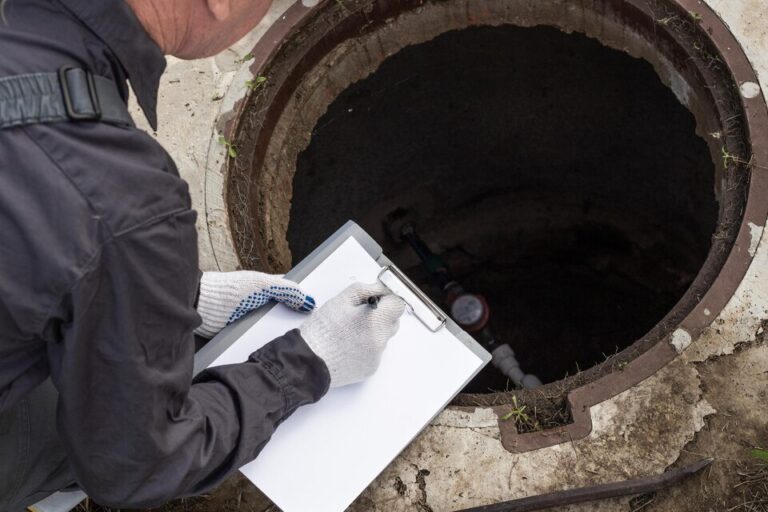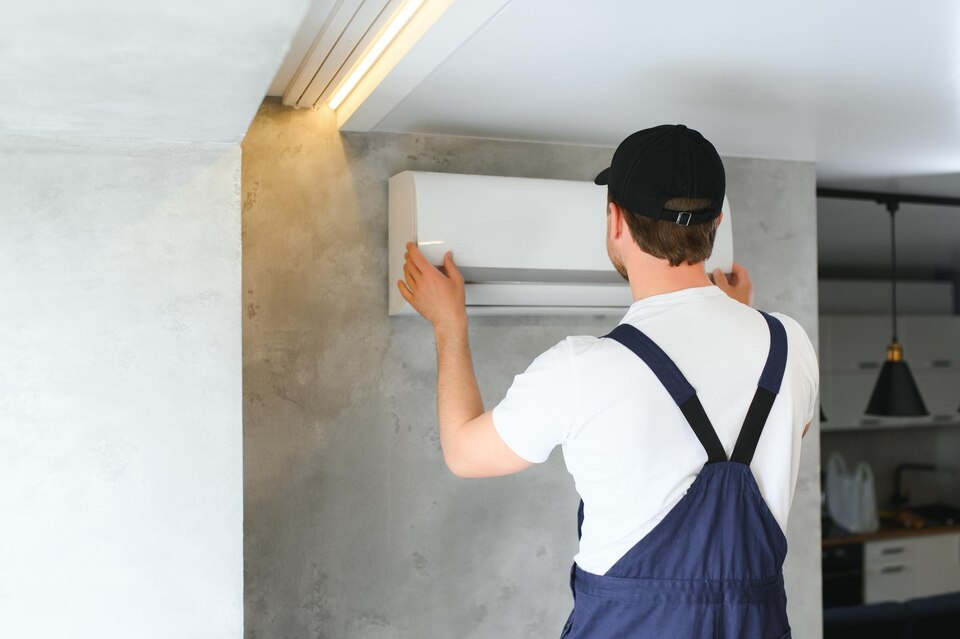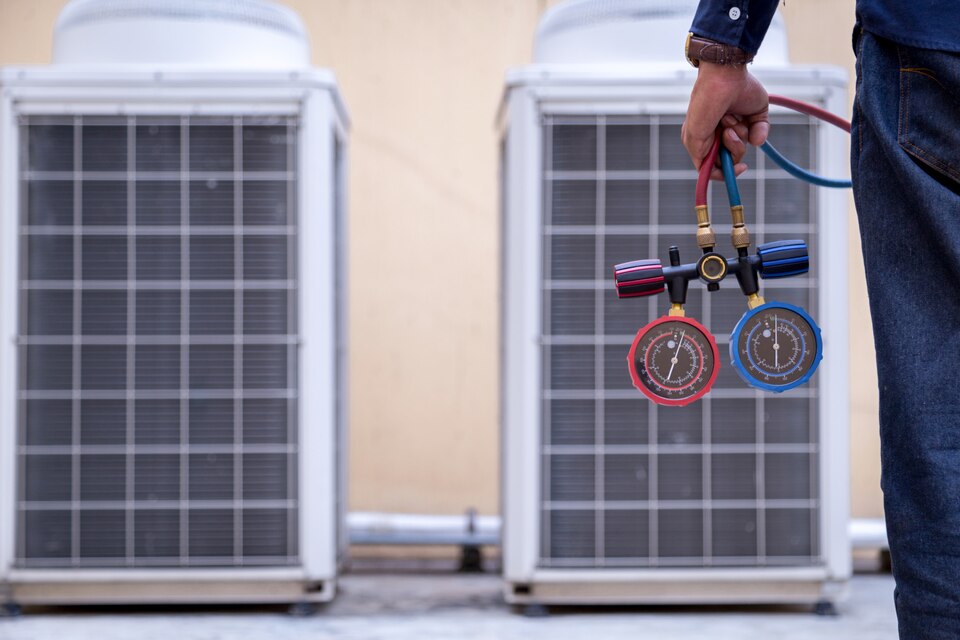Sewer line issues can cause significant headaches for homeowners. Problems like blockages, leaks, and tree root intrusions can lead to unpleasant odors, slow drains, and even property damage. Understanding the common signs of sewer line problems and knowing when to call our professionals for repairs can save you time and money.
Signs You Need Sewer Line Repair
Identifying the need for sewer line repair early can save you from more extensive and costly damages. Various signs can indicate that your sewer line requires professional attention.
Slow Drainage
It’s common for a single slow drain to mean a clog, but when multiple fixtures in your home drain slowly, it can point to a more serious issue. Slow drainage often indicates a blockage somewhere in the sewer line, impeding the water flow and causing backups.
Foul Odors
Unpleasant smells coming from your drains, toilets, or even your yard can be another red flag. These odors are a strong indication that there is a crack or leak in the sewer line, allowing sewer gases to escape into your home or yard.
Recurring Clogs
If you frequently use plungers or drain cleaners to clear your sinks, bathtubs, or toilets, this can indicate a deeper problem. Recurring clogs that don’t resolve with regular methods often suggest a more significant blockage or damage in your sewer line.
Wet Spots in the Yard
Unexpected damp or wet spots in your yard, especially when it hasn’t rained recently, can indicate a leaking sewer pipe. These wet areas can be a clear sign that sewage is seeping out from underground pipes, requiring urgent repair.
Strange Noises
If you hear gurgling sounds when using your sinks, toilets, or showers, it could mean air is trapped in the pipes due to a blockage. These noises sometimes signify that water is struggling to flow freely, hinting at a problem in the sewer line.
Common Sewer Line Problems
Understanding common sewer line problems can help you better identify and address issues quickly. Here are several frequent issues homeowners might encounter:
Tree Root Intrusions
Tree roots are naturally drawn to the moisture and nutrients in sewer lines. Over time, roots can penetrate small cracks or joints in the pipes, causing significant blockages and even breaking the pipes. Tree root intrusions are one of the leading causes of sewer line problems.
Pipe Corrosion
Older homes with metal sewer pipes may experience corrosion over time. Rust and deterioration weaken the pipes, making them prone to leaks and breaks. Corroded pipes can also lead to reduced water flow and frequent blockages.
Pipe Shifting and Collapsing
Ground movement or shifting soil can cause sewer pipes to misalign or collapse. This movement can result from natural soil settling, construction activities, or even heavy traffic above ground. Misaligned or collapsed pipes disrupt the flow of wastewater, leading to severe blockages and system failures.
Blockages from Debris
Solid materials like grease, food particles, and non-flushable items can build up inside the sewer line, causing blockages. Common household items like sanitary products, wet wipes, and cooking grease should never be flushed down the drains, as they can easily clog the system.
Bellied Pipes
A bellied pipe occurs when a section of the sewer line sinks due to ground conditions, creating a low spot where wastewater and debris can collect. This sagging can hinder the free flow of water and waste, leading to frequent clogs and potential breaks.
Leaking Joints
The connections between sewer pipes can weaken over time, leading to leaks. Leaking joints allow wastewater to escape into the surrounding soil, causing wet spots in your yard and potentially contaminating groundwater.
Effective Sewer Line Repair Solutions
Addressing sewer line problems promptly with effective solutions can prevent further damage and ensure the smooth operation of your plumbing system. Here are several proven repair methods:
Hydro Jetting
Hydro jetting is a powerful method to clear blockages from your sewer line. It uses high-pressure water to remove grease, debris, and tree roots. This technique thoroughly cleans the pipes, restoring proper water flow and preventing future clogs.
Trenchless Repair
Trenchless repair techniques, like pipe lining and pipe bursting, offer less invasive solutions to fix damaged sewer lines. Pipe lining involves inserting a resin-coated tube into the damaged pipe, which hardens to create a new pipe within the old one. Pipe bursting entails pulling a new pipe through the old one while simultaneously breaking the old pipe apart. Both methods reduce the need for extensive excavation, minimizing disruption to your yard and driveway.
Traditional Excavation
When the damage to a sewer line is extensive or involves collapsed sections, traditional excavation may be necessary. This method involves digging a trench to expose the damaged pipe, allowing our professionals to replace the affected sections. Although more disruptive, excavation ensures a thorough repair for severely damaged sewer systems.
Spot Repairs
For minor damages or localized issues, spot repairs can be an effective solution. This method involves excavating a small section of the sewer line to access and repair the specific problem area. Spot repairs are less invasive than full pipe replacement and can address issues like minor leaks or joint failures.
Preventive Measures for Sewer Line Maintenance
Preventive maintenance is key to prolonging the life of your sewer line and avoiding costly repairs. Implementing these measures can help keep your sewer system in good working condition:
Regular Inspections
Scheduling regular inspections with our professionals can help identify potential issues before they become major problems. Inspections can reveal early signs of blockages, leaks, or damage, allowing for timely repairs.
Proper Disposal Practices
Being mindful of what goes down your drains can prevent blockages and damage. Avoid flushing non-flushable items like wipes, sanitary products, and paper towels. Similarly, do not pour grease, oil, or food scraps down the kitchen sink. Proper disposal practices help maintain clear pipes and prevent clogs.
Tree Root Management
If you have trees near your sewer line, consider implementing measures to control root growth. Regularly trimming trees and using root barriers can prevent roots from infiltrating and damaging your sewer pipes. Consult with our professionals for additional root management solutions.
Using Enzyme Cleaners
Enzyme-based cleaners are a safe and effective way to maintain your sewer line. These cleaners use natural bacteria and enzymes to break down organic matter, keeping your pipes clear and odor-free. Incorporating enzyme cleaners into your maintenance routine can help prevent buildup and reduce the risk of blockages.
Installing a Backwater Valve
A backwater valve is a device that prevents sewage from backing up into your home. Installing a backwater valve can safeguard your property against sewer backups, especially during heavy rainfall or flooding. Our professionals can assess your system and recommend the appropriate valve for your needs.
Conclusion
Taking care of your sewer line is essential for a functional and healthy home environment. From recognizing early signs of issues to understanding common problems and effective repair solutions, being proactive ensures that your sewer system operates smoothly. Implementing preventive measures further protects your sewer line from potential damage and extends its lifespan.
For reliable sewer line repair in Cerritos, CA, trust the expertise of Power Pro Plumbing Heating & Air. Our professionals are equipped to handle all your plumbing needs, ensuring your system remains in top condition. Contact us today to schedule a consultation and keep your home’s sewer system running efficiently!











